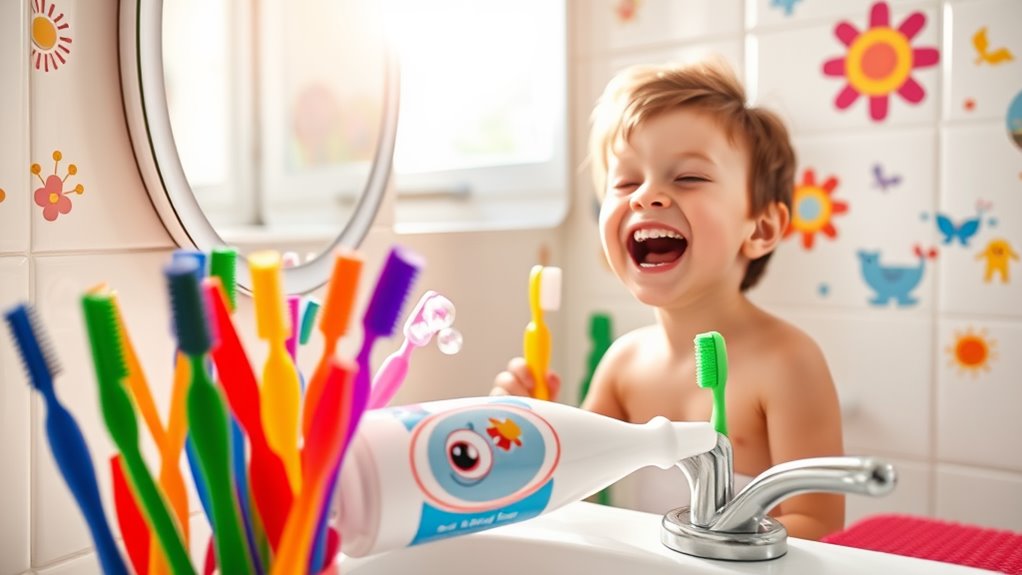The Ultimate Guide to Brushing- Are You Doing It Right.
Did you know that most people brush their teeth incorrectly, compromising their oral health? It’s not just about the act itself; it’s about how you do it. Many overlook essential techniques and tools that can significantly impact their dental hygiene. Understanding the nuances of proper brushing can make all the difference. So, are you really doing it right? Let’s explore the ultimate guide to ensure you achieve optimal results.
Key Takeaways
- Brush twice daily for at least two minutes, using gentle circular motions at a 45-degree angle to effectively clean all surfaces.
- Choose a soft-bristled toothbrush and replace it every three to four months, or sooner if bristles are frayed.
- Use fluoride toothpaste, applying a pea-sized amount, to strengthen enamel and enhance overall oral health.
- Incorporate daily flossing and an antimicrobial mouthwash to maintain interdental cleanliness and prevent plaque buildup.
- Avoid common mistakes like rushing, excessive pressure, or sharing toothbrushes to ensure optimal oral hygiene.
Understanding the Importance of Brushing
Brushing your teeth is crucial for maintaining good oral health. Proper brushing techniques help remove plaque, prevent cavities, and reduce the risk of gum disease.
To ensure effectiveness, you should hold your toothbrush at a 45-degree angle to your gums and use small circular motions. Don’t forget to brush all surfaces of your teeth, including the fronts, backs, and chewing surfaces.
Additionally, you should spend at least two minutes brushing, dividing the time evenly among all quadrants of your mouth. Understanding proper timing for brushing after meals is also essential for protecting enamel.
Choosing the Right Toothbrush
Choosing the right toothbrush is essential for effective oral care. You’ll want to consider factors like brush head size, bristle firmness, and whether a manual or electric option suits your needs best. Making an informed choice can significantly impact your brushing experience and overall dental health. For instance, research indicates that electric brushes can reduce plaque by 21% compared to manual brushes, enhancing your oral hygiene routine.
Brush Head Size
Finding the right toothbrush can greatly impact your oral health, and one of the key factors to consider is brush head size.
A smaller brush head allows for better maneuverability, making it easier to reach tight spaces, like between teeth and along the gum line.
Conversely, a larger brush head can cover more surface area, which some may prefer for efficiency.
Ultimately, the best size depends on your mouth’s dimensions and personal comfort.
Ensure the brush head fits comfortably in your mouth, enabling you to brush effectively without strain.
Choose wisely to enhance your daily oral care routine.
Bristle Firmness Options
When it comes to selecting a toothbrush, bristle firmness is a crucial factor that can significantly affect your oral hygiene. You’ll typically find three options: soft, medium, and hard bristles.
Soft bristles are ideal for most people, as they effectively clean without damaging your gums.
Medium bristles can be suitable for those with healthier gums, while hard bristles may irritate sensitive mouths and cause gum recession.
Consider your dental health, any existing sensitivities, and your dentist’s recommendations when choosing.
Ultimately, selecting the right bristle firmness can enhance your brushing experience and promote better oral health.
Manual Vs Electric
With two primary options—manual and electric toothbrushes—deciding which is best for your oral care routine can be challenging.
Manual toothbrushes are cost-effective and allow for precise control, making them a solid choice if you focus on technique.
In contrast, electric toothbrushes often provide better plaque removal due to their oscillating or vibrating features, making them easier for those who struggle with manual brushing.
If you have specific dental needs, like braces or gum sensitivity, consider consulting your dentist.
Ultimately, the right choice depends on your personal preferences, habits, and comfort, ensuring you maintain a consistent and effective brushing routine.
Selecting the Best Toothpaste
Selecting the best toothpaste can significantly impact your oral health.
When choosing a toothpaste, consider the following factors to ensure you make the right choice:
- Fluoride content: Helps to strengthen enamel and prevent cavities.
- Specific needs: Look for formulas targeting sensitivity, whitening, or tartar control.
- ADA Seal of Acceptance: Ensure it meets safety and effectiveness standards.
Additionally, be aware that many toothpaste brands include hidden ingredients that can influence both your experience and health.
Mastering Proper Brushing Techniques
How can you ensure you’re brushing your teeth effectively?
Start by holding your toothbrush at a 45-degree angle to your gums.
Use gentle, circular motions to clean the outer, inner, and chewing surfaces of each tooth.
Spend at least two minutes brushing, dividing your mouth into quadrants and dedicating time to each.
Don’t forget to brush your tongue to remove bacteria and freshen your breath.
Use a fluoride toothpaste for added protection against cavities.
Finally, replace your toothbrush or brush head every three to four months to maintain optimal cleaning efficiency.
Additionally, avoid applying excessive pressure while brushing, as this can damage tooth enamel.
Mastering these techniques helps promote better oral health.
Establishing a Brushing Routine
Regularly establishing a brushing routine is essential for maintaining optimal oral health.
By making brushing a consistent part of your daily life, you reduce the risk of cavities and gum disease.
Here are some tips to help you create an effective routine:
- Choose a specific time: Brush twice a day, ideally in the morning and before bed.
- Set a timer: Aim for at least two minutes to ensure thorough cleaning.
- Keep your supplies handy: Store your toothbrush and toothpaste in visible places to remind you to brush.
Additionally, incorporating a morning oral care routine can significantly enhance your overall health by reducing the risk of systemic diseases.
Common Brushing Mistakes to Avoid
Are you making the most of your brushing routine? Many people overlook common mistakes that can hinder their oral health.
First, don’t rush; aim for at least two minutes of brushing. Use gentle, circular motions instead of harsh scrubbing, which can damage gums and enamel.
Avoid neglecting your tongue; bacteria can accumulate there, leading to bad breath. Also, don’t forget to brush all surfaces of your teeth, including the backs.
Lastly, using an old or incorrect toothbrush can reduce effectiveness. Holding your toothbrush at a 45-degree angle can significantly enhance your dental care and promote a healthier smile.
When to Replace Your Toothbrush
It’s essential to know when to replace your toothbrush to maintain optimal oral health.
Look for signs of wear, such as frayed bristles, which indicate it’s time for a new brush.
Generally, dentists recommend replacing your toothbrush every three to four months, or sooner if you notice significant wear.
Signs of Wear
Your toothbrush is an essential tool for maintaining oral hygiene, but it won’t last forever.
Recognizing the signs of wear can help you determine when it’s time for a replacement.
Look for these indicators:
- Frayed bristles: If the bristles splay out or lose their stiffness, it’s less effective.
- Discoloration: Any unusual color changes can signal wear or bacterial buildup.
- Unpleasant odor: A foul smell may indicate bacteria growth on your brush.
Replacing your toothbrush when you notice these signs ensures you’re effectively cleaning your teeth and maintaining optimal oral health.
Recommended Replacement Frequency
Regularly replacing your toothbrush is crucial for maintaining effective oral hygiene. Dentists recommend changing your toothbrush every three to four months, or sooner if you notice signs of wear, such as frayed bristles.
Using a worn toothbrush can lead to ineffective cleaning and may harbor bacteria. If you’ve been sick, replace your toothbrush after recovering to prevent reinfection.
Additionally, consider the type of toothbrush you use; electric toothbrush heads should also be replaced every three months.




